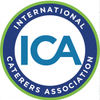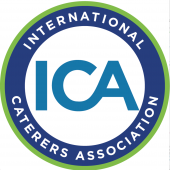Navigating 2025 Food Costs: Insights from Top CaterersNavigating 2025 Food Costs: Insights from Top Caterers
Recently, the International Caterers Association (ICA) hosted a webinar titled "Navigating 2025 Food Costs"
January 23, 2025

As food prices continue to fluctuate and inflationary pressures persist, understanding how to manage food costs is crucial for catering businesses in 2025. According to the U.S. Bureau of Labor Statistics, food prices have been rising steadily, with a reported 5.4% increase in 2023. While some categories, like beef, are expected to see price reductions, other items like fresh produce may remain volatile. As caterers, staying ahead of trends and understanding how to mitigate these costs is key to ensuring profitability. Recently, the International Caterers Association (ICA) hosted a webinar titled Navigating 2025 Food Costs, where industry experts shared their strategies for handling these challenges. Below, we share key insights and strategies discussed during the session.
Speakers:
Clint Elkins, Vice President of Sales, SB Value
Jason Sutton, Executive Chef, Footers Catering - Denver, CO
David Anderson, Executive Chef, Catering by Design - Denver, CO
Jeffrey Miller, CEO and Founder, Jeffrey A. Miller, Philadelphia, PA
Q&A with ICA experts on navigating 2025 food costs
Q: How is the catering industry adapting to economic and pricing challenges as we move into 2025?
David Anderson (Executive Chef, Catering by Design):
"In 2023 and early 2024, food prices were all over the place, but things are starting to stabilize now. Pricing often involves estimating, which is tough in the catering business, as we’re selling now but buying and cooking later. So, we have to be adaptable."
Jeffrey Miller (CEO, Jeffrey A. Miller Catering):
"During the pandemic, we added a provision to our contracts that allows for price adjustments if inflation exceeds 3%. This has helped mitigate price surges and supply issues."
Jason Sutton (Executive Chef, Footers Catering):
"We’re feeling better about where trends are heading, especially with the minimum wage in Denver set at $18 per hour. It’s a good sign that we can move forward with greater stability into 2025."
Q: Are there any continued shortages or inflation of products you're seeing?
Jason Sutton:
"Yes, we’ve noticed that fruits and vegetables, particularly lettuce, have a shorter shelf life. Ordering lettuce on Wednesday for a Saturday event is no longer feasible. We have to source fresher produce more often."
Q: What are your predictions for food cost deflation in 2025?
David Anderson:
"Nothing major stands out yet, but there are some fluctuations in the chocolate market we’re keeping an eye on. Overall, we’re not expecting a significant dip in food prices."
Clint Elkins (Vice President of Sales, SB Value):
"Beef prices are expected to decrease as cattle herds recover. However, once prices rise, it’s difficult to bring them down again—similar to the housing market."
Q: Are there specific items that have seen significant price fluctuations, and how have you adjusted your menus?
Jason Sutton:
"We do our best to accommodate special requests like oysters or beef Wellington, but we rely on market pricing. For salads, we opt for a Chef's Choice option from a local purveyor, which allows us flexibility depending on what’s available."
Jeffrey Miller:
"We also use a Chef's Choice approach for sides and other items to balance cost-effectiveness with seasonality. Clients often go for our chef’s selection, but if they request something specific, there’s an upcharge."
Q: How do you communicate price changes with clients?
Jeffrey Miller:
"We outline potential price increases in our contracts and review it with clients up front. If inflation hits across the board, the inflation clause kicks in. If only one item is affected, we often absorb the cost."
Q: How can caterers avoid leaving money on the table when pricing their services?
Jason Sutton:
"Collaborate with your design and décor teams. Integrating food and décor can enhance the overall experience and drive additional revenue. Also, offering flexible upgrades through pastry departments or other add-ons can help increase profits."
David Anderson:
"Having a strong relationship with your design team is key. It helps clients feel the extra investment is worth it. We’re also investing in in-house items for rental, which provide stable pricing and good profit margins."
Jeffrey Miller:
"As venue managers, we often have the opportunity to upsell food, décor, and planning services. It’s about tapping as many revenue streams as possible."
Q: What are your best practices for reducing waste and maximizing profits?
Jason Sutton:
"Service style plays a big role in this. Family-style service is a great way to minimize food waste and staffing costs compared to buffets or plated meals. Rethinking service helps reduce overall costs."
David Anderson:
"Make your suppliers work for you. They should be helping you find the best products at the best prices."
Jeffrey Miller:
"We always check prices with multiple vendors to ensure we're getting the best deal. Also, managing food waste is critical. For instance, we serve olives in small containers on charcuterie boards so we can easily replenish and store any leftovers."
Clint Elkins:
"Always review your invoices carefully. Prices can creep up without you noticing, so make sure your vendors are watching out for your best interests."
Q: How can smaller catering companies increase their bottom line?
David Anderson:
"Adding a personal touch to your service can make a big difference. Clients appreciate the customized experience, and it helps justify the cost."
Jason Sutton:
"Identify your high-value clients early and cultivate those relationships for long-term growth."
Q: After planning and purchasing efficiently, what else can caterers do to maximize sales and profits?
Jeffrey Miller:
"Group tastings are a great opportunity to showcase extras—special stations, favors, and more. These often lead to substantial upgrades in revenue."
Q: What staple items can you purchase differently without sacrificing quality?
Jason Sutton:
"Look beyond food—buying items like gloves, eco-friendly plates, and spices in bulk can significantly lower costs. It's all about sourcing the right products at the right price."
Jeffrey Miller:
"We always buy staples like Sterno by the pallet, which gives us bulk discounts."
Q: What should caterers keep in mind when negotiating with suppliers?
Jason Sutton:
"Be clear and direct in your negotiations. Building a strong, trustworthy relationship with your suppliers is invaluable."
Clint Elkins:
"Always ask questions and scrutinize your invoices. Hidden fees, like fuel charges, can add up quickly."
Conclusion
As we move into 2025, managing food costs will require caterers to be more strategic than ever. By staying informed on price trends, adjusting menus to market conditions, and building strong relationships with suppliers, caterers can position themselves to succeed in an increasingly volatile market. The insights shared in the ICA webinar emphasize the importance of flexibility, collaboration, and proactive planning in navigating food cost fluctuations while maintaining profitability. By embracing these strategies, caterers can continue to meet client expectations while protecting their bottom lines.





.png?width=700&auto=webp&quality=80&disable=upscale)
.png?width=700&auto=webp&quality=80&disable=upscale)
